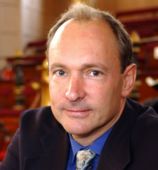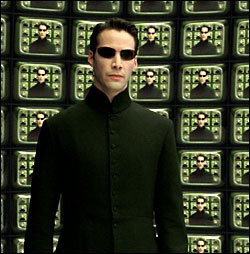Hauntology in the Hyperreal: Digital Relics in Hypertext.

"There is no band." ===>[Mulholland Dr.]
===== All ... is a recording =====
"There is no longer a double, one is already in the other world, which is no longer an other, without a mirror, without a projection, or a utopia that can reflect it - simulation is insuperable, unsurpassable, dull and flat, without exteriority - we will no longer even pass through to ‘the other side of the mirror,’ that was still the golden age of transcendence.”
The hyperreal has now almost-completely colonised and superceded the real. [See Baudrillard ]
The notion of the derelict and the disused comes up. Julian raised the idea - via Gibson (in one of the later novels) - of disused cyberspace: the websites of companies that have ceased to trade, digital relics awaiting re-population.
 Hypertext [the principal characteristic of the World Wide Web], has, since its very inception in 1991, been always-already hyperreal, a copy without referent, despite the post-modern imperative of insisting that - even in hypertext - there is still somehow an unambiguous underlying reality that can somehow be referenced or alluded to. Nowhere is this clearer than in the phenomenon of the very first hypertext (below), which now transpires to be itself an online copy of a copy - of a website that doesn't anymore even exist in the nostalgic "real" of hyperspace. In contrast to "real" hypertexts, are the "machine in the ghost" websites, the digital relics referred to above, dormant copy hypertexts
Hypertext [the principal characteristic of the World Wide Web], has, since its very inception in 1991, been always-already hyperreal, a copy without referent, despite the post-modern imperative of insisting that - even in hypertext - there is still somehow an unambiguous underlying reality that can somehow be referenced or alluded to. Nowhere is this clearer than in the phenomenon of the very first hypertext (below), which now transpires to be itself an online copy of a copy - of a website that doesn't anymore even exist in the nostalgic "real" of hyperspace. In contrast to "real" hypertexts, are the "machine in the ghost" websites, the digital relics referred to above, dormant copy hypertexts[like this one, the oldest dormant hypertext in Ireland, from 1994, which, uncannily, coincided with the date of birth of Ireland's "Celtic Tiger" post-modern frenetic capitalism, to which the political shenannegans described in the hypertext allude],
the undead of the web, hyperreality at rest.

The first website hypertext, created by Hypertext/WWW inventor Tim Berners-Lee in August 1991 at CERN in Switzerland, no longer exists, "only" surviving instead as an exact copy of a relic
[ the original URL address - now defunct - was http://nxoc01.cern.ch/hypertext/WWW/TheProject.html, confirming once again that hypertext persists, while its territorial location, its physical infrastructure (the Internet), perishes, fades away],
much as, in the establishment art canon, perfect painterly reproductions of the Masters are, without irony, called "genuine fakes."
Extract
World Wide Web
The WorldWideWeb (W3) is a wide-area hypermedia information retrieval initiative aiming to give universal access
to a large universe of documents.
Everything there is online about W3 is linked directly or indirectly to this document, including an executive summary of the project, Mailing lists , Policy , November's W3 news , Frequently Asked Questions .
[1991] Files available on the net, posted on alt.hypertext (6, 16, 19th Aug)
[1985] Earliest Internet Domain Names [the first was SYMBOLICS.COM, registered on 15th March, 1985]
 "I built on the work of others -- the Internet, invented 20 years before the web, by Vint Cerf and Bob Kahn and colleagues, for example, and hypertext, a word coined by Ted Nelson for an idea of links which was already implemented in many non-networked systems. I just put these technologies togethe ... So I am going to try this blog thing using blog tools. So this is for all the people who have been saying I ought to have a blog."
"I built on the work of others -- the Internet, invented 20 years before the web, by Vint Cerf and Bob Kahn and colleagues, for example, and hypertext, a word coined by Ted Nelson for an idea of links which was already implemented in many non-networked systems. I just put these technologies togethe ... So I am going to try this blog thing using blog tools. So this is for all the people who have been saying I ought to have a blog."Amazingly, web-creator Tim Berners-Lee, quoted from his blog above, has only recently (last December) set up his own blog: timbl's blog.



2 Comments:
?? They know that, but they don't believe it ... isn't this why postmodernity is [cynically] reactionary, taking recourse into the phantasmatic "real" of the inner narcissistic? Isn't it such a fantasy [of an underlying real] that makes the post-modern possible?
Perhaps I didn't make my point clearly enough, so maybe I'll be cruelly Zizekian by asking, "What was the question again? :-)
Yes, Mark, the claim that there is an unambiguous real is indeed opposed to most renderings of the post-modern, except by those who actually subscribe to the ideology of post-modernity.
Isn't this the sham of post-modernity, the pretence that "nothing matters", all is [redundant] perspective, while all the time being fundamentalists of the symbolic real of Kapital? Isn't the current obsession with the everything "iconic", for instance, a desperate attempt to grasp some - ephemeral phantom as "real"?
This is going to run and run ...
Post a Comment
<< Home